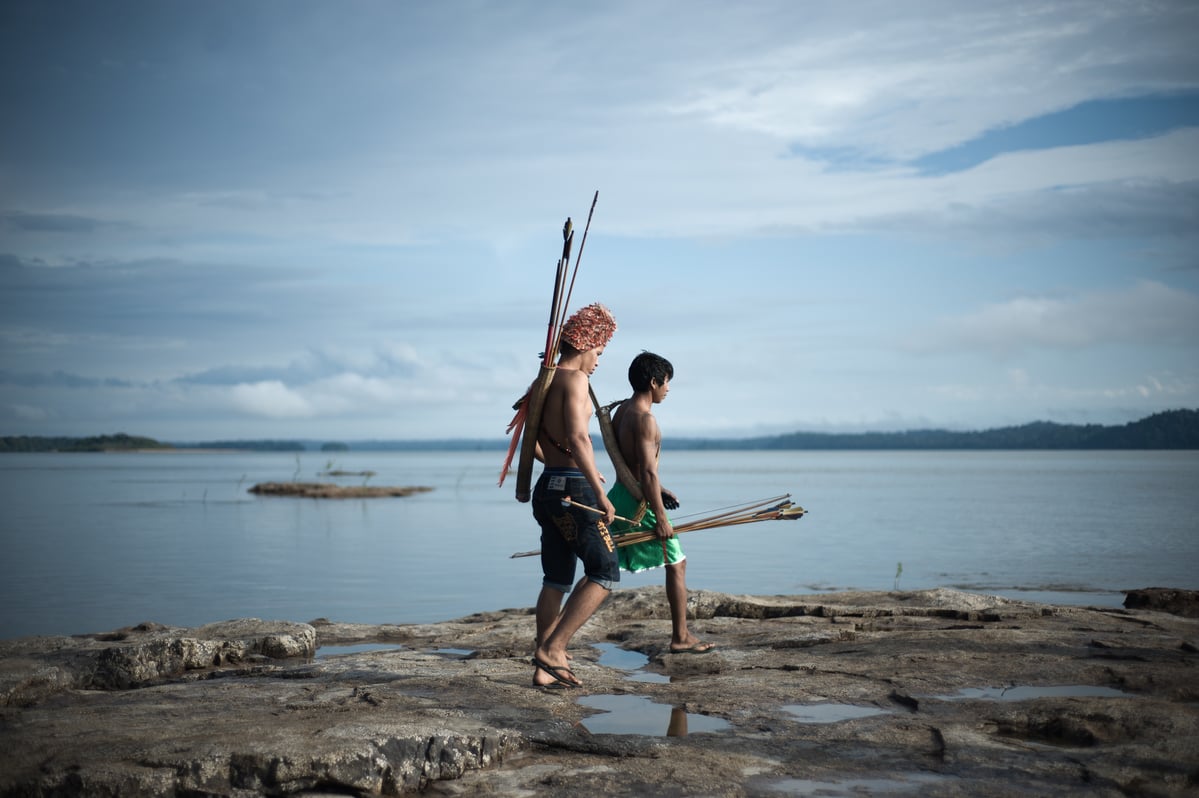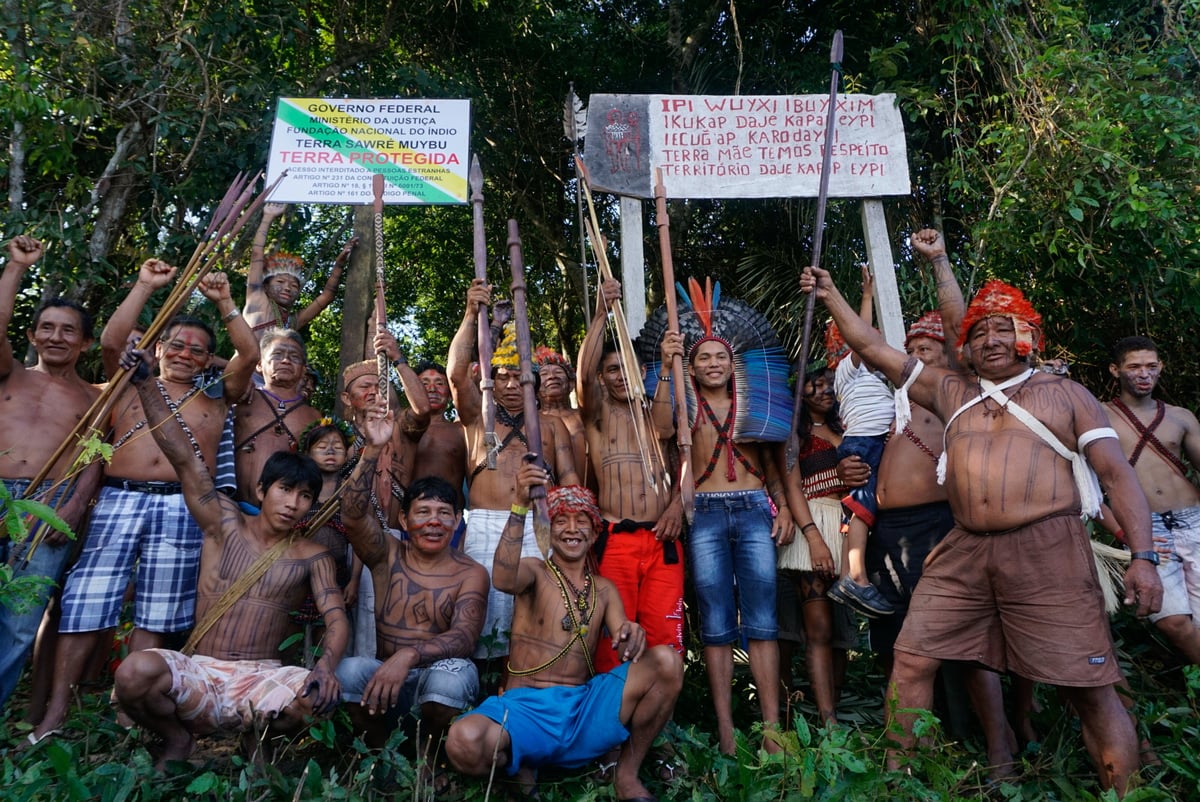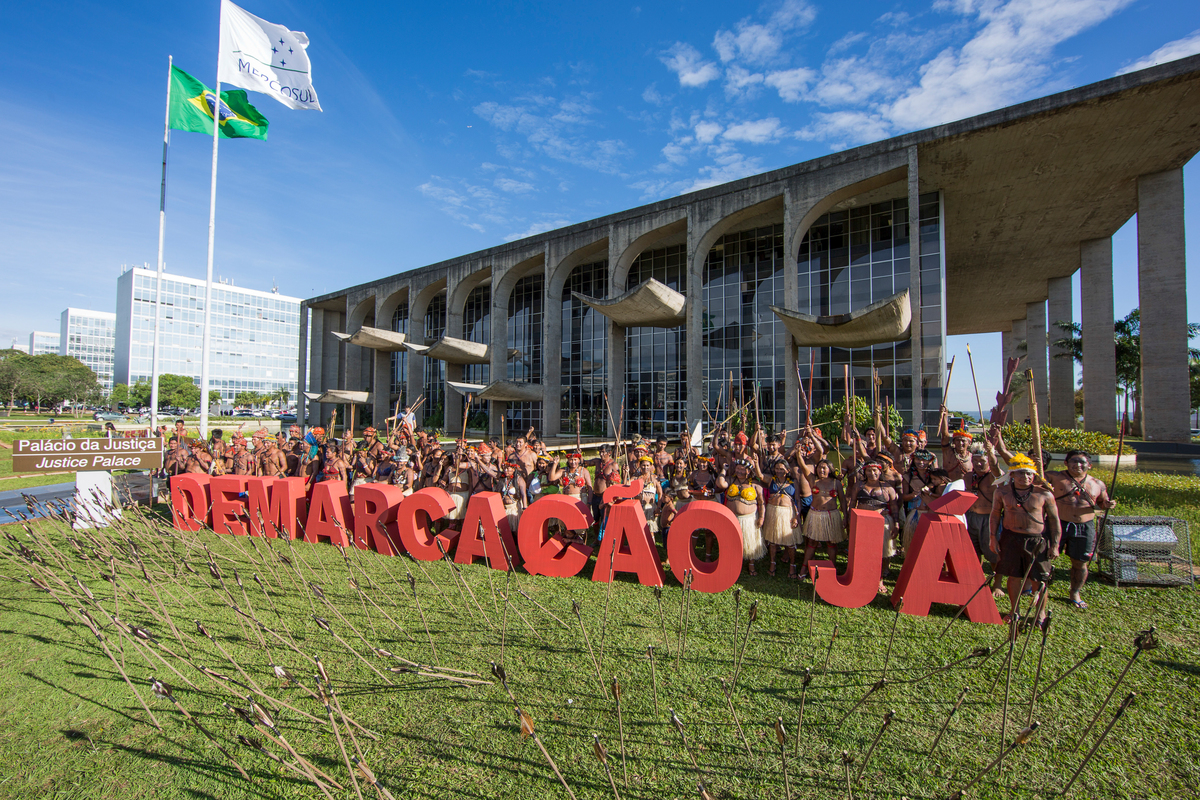Sawré Muybu is an Indigenous Land located in the Tapajós River Basin, in the state of Pará, Brazil, in the heart of the Amazon rainforest. Covering 178,173 hectares - an area almost the size of 250,000 soccer fields - the territory is rich in fauna and flora, and home to the Munduruku People. Protecting it means ensuring the continuity of an ancestral, spiritual and cultural way of life that has always been in harmony with the forest.

The Munduruku People have been fighting for the rights to a land that has always belonged to them but is threatened by mining, illegal logging, and infrastructure projects. Now, it's time to celebrate a historic and profoundly symbolic victory not only for the Munduruku, but for all Indigenous Peoples of the Amazon and Brazil. On September 25, 2024, the Sawré Muybu territory was officially demarcated.
A long process
The demarcation process for Sawré Muybu began in 2007. However, it was stalled for a long time due to political issues and mainly due to the economic influence of mining in the region.
In 2014, the Munduruku people self-demarcated their territory, placing signs at the borders of the Indigenous Land, and pushing invaders out. This act had significant political implications and became a reference for Indigenous movements, inspiring various Indigenous Peoples across Brazil to do the same in their territories - a powerful, brave, and inspiring gesture of autonomy and independence.
10 years later, the demarcation process has finally been signed into decree by the Brazilian Minister of Justice. However, this does not mean that the demarcation process is complete. Now, the Brazilian government needs to mark the physical boundaries and remove the illegal occupants within the territory. After that, the Brazilian President will ratify the territory, completing the process.

But even at this stage, the recognition of the Sawré Muybu Land right can have significant repercussions for large-scale projects in the area, such a Ferrogrão, a railway project that would cut through the Sawré Muybu Land, and the São Luiz do Tapajós hydro dam. The dam project was shelved by the Brazilian environmental agency Ibama in 2016, but recent studies by Brazilian power company Eletrobrás this year shows that the struggle is not over. The recognition of the Sawré Muybu Land represents a major obstacle to any project that ignores the rights and self-determination of Indigenous Peoples.
People Power
The signing of the decree is an achievement, but it was only possible thanks to the strength, wisdom, and persistence of the Munduruku People, who never gave up fighting for what is rightfully theirs. Over 17 years, efforts by the Munduruku People ranged from international pressure to collaborations with Brazilian authorities and environmental and human rights organizations.

A partnership between Greenpeace Brazil and the Munduruku People has been established since the Munduruku opened their villages to Greenpeace in 2013. The decision to support the Munduruku resistance against the São Luiz do Tapajós dam was not only due to the environmental impact, but also out of an ethical commitment to the autonomy and self-determination of the Forest Peoples. The struggle for the forest and the rights of Indigenous Peoples is the same. After over 4,000 days of resistance, now is a moment of celebration and recognition of the collective strength of all of those who have been supporting this cause.
But Munduruku's struggle is not over. In a statement on social media, Indigenous leader Alessandra Munduruku - the winner of the Goldman Environmental Prize Award in 2023 - celebrated the signing of the decree but reminded everyone that her people still face many challenges:
"It was a tough fight - self-demarcations, pressure on the National Foundation for Indigenous People (Funai), the Ministry of Justice. We organized movements to show that the territory is ours. A previous government wanted to build a hydroelectric dam in our Land, but we stood firm and said it was ours and the dam would not happen. We carried out self-demarcations and discussed consultation protocols. There were many police and researchers in our area studying the hydro dam project, but we stopped them. I am grateful to those who believed in our people's struggle and our shamans' power, who always told us to listen to the forest and our ancestors. Congratulations to all of us. But the struggle is not over - we are still suffering today, with droughts and fires, and our wells drying up."
Greenpeace continues to learn from Indigenous Peoples that the struggle for the forest is multidimensional. It is a battle against deforestation, land grabbing, and illegal mining, but also a fight for human rights and Indigenous Peoples' sovereignty. The demarcation of Sawré Muybu is a victory that transcends borders. It reinforces the idea that we can protect the Amazon with persistence and solidarity. More than ever, we have reason to celebrate and continue the fight. Sawé!
Jorge Oliveira is a Comms Coordinator for the Indigenous Peoples Front at Greenpeace Brazil






